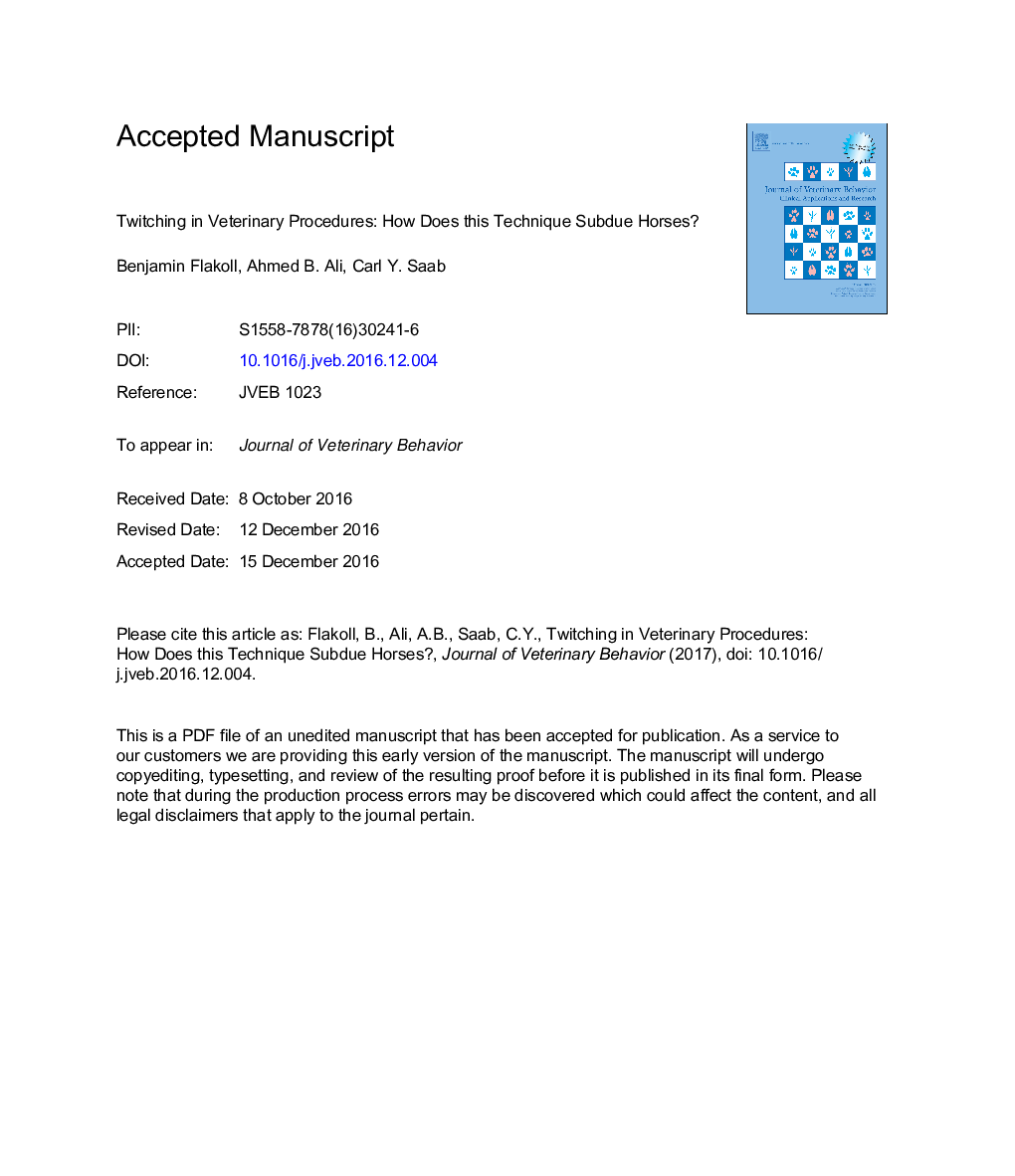| Article ID | Journal | Published Year | Pages | File Type |
|---|---|---|---|---|
| 5535846 | Journal of Veterinary Behavior: Clinical Applications and Research | 2017 | 18 Pages |
Abstract
This study investigates the mechanisms by which 2 forms of restraint (lip twitch and ear twitch) subdue horses. Prior research suggests that the lip twitch subdues horses through an analgesic effect; the mechanism of the ear twitch is unknown. Heart rate (HR) and heart rate variability (HRV) were measured to determine autonomic nervous system activity before and during application of the twitches, and salivary cortisol levels were analyzed to assess stress levels before and after application of the twitches. Twelve male horses (all geldings) were divided into 2 groups. One group received the lip twitch, and the other received the ear twitch. Results show that the lip twitch significantly decreased HR and increased HRV when applied for 5Â minutes. However, when the lip twitch was applied for a longer period, it significantly increased HR and decreased HRV. The ear twitch significantly increased HR, decreased HRV, and increased salivary cortisol levels regardless of the length of application. It is concluded that the lip twitch might initially subdue horses through a calming, probably analgesic effect at least in the initial 5Â minutes, whereas the ear twitch evokes a stressful response, immobilizing horses through fear and/or pain.
Keywords
Related Topics
Life Sciences
Agricultural and Biological Sciences
Animal Science and Zoology
Authors
Benjamin Flakoll, Ahmed B. Ali, Carl Y. Saab,
